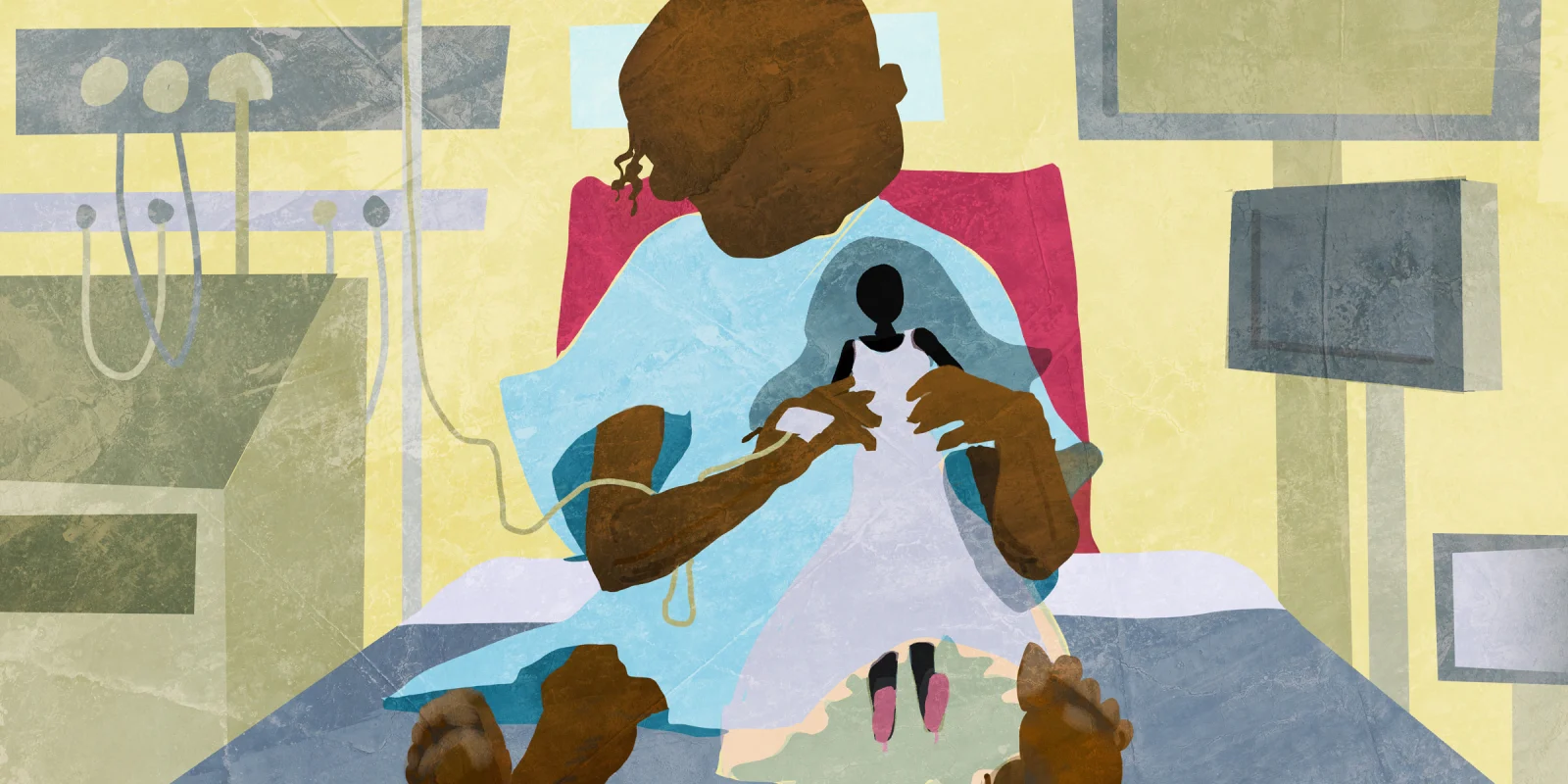If you have ever taken care of a young patient with Ewing sarcoma, you understand how tragic it can be. Ewing sarcoma is one of the most common primary malignancies of bone, with an incidence of about 1 case per million in the United States, affecting children and young adults. The prognosis worsens with age, with patients older than 16 years old usually faring less well than younger children. Male sex is also a poorer prognostic factor. Ewing sarcoma can start in any bone.
Good updates were given at this 2022 ASCO meeting, but no curative therapies are yet in sight. Tupper et al. reviewed the various presentations of Ewing sarcoma by analyzing primary site and survival using the National Cancer Database (NCDB) [J Clin Oncol 40, 2022 (suppl 16; abstr e23510)]. NCDB was surveyed for patients diagnosed with Ewing sarcoma between 2004-2018, identified by ICD-O-3 histology code 9260. Survival outcomes were correlated for the different primary sites. A total of 4,284 patients with known primary site and survival data were included. Primary sites associated with statistically significantly survival differences included, from best to worse: the skull, face and mandible followed by upper limb. Pelvis, sacrum, and coccyx sites presaged a worse survival. Survival of patients with primary site of the upper limb versus lower limb, and vertebral column versus ribs, sternum, and clavicle did not differ (each p > .05). Ewing sarcoma is an aggressive, poorly differentiated tumor, characterized by specific translocations involving ETS transcription factors, with EWS–FLI and EWS–ERG translocations being the most common. Ewing sarcoma cells have a strict dependency on EWS–ETS fusion proteins with a marked paucity of mutations in immediately targetable pathways. The aberrant transcription factor resulting from this fusion is not easy to target. A small molecule known as YK-4-279 was shown to interfere directly with the EWS-FLI1 activity by blocking its interaction with RNA helicase A, and led to an analog that was tested in a clinical trial (NCT02657005). Results were presented at ASCO 2021 by Ludwig et al. with the demonstration of a modest activity. This is one of the first steps to treat this poor prognosis sarcoma biologically and rationally.
The current standard of care for primary treatment involves months of alkylating agent combination chemotherapies. Radiotherapy after surgery does not seem to affect survival [J Clin Oncol 40, 2022 (suppl 16; abstr 11531)]. This year, two studies were notable as these results might change the standard of care for the patients suffering from Ewing sarcoma, until better targetable treatments are discovered.
The first study of interest [J Clin Oncol 40, 2022 (suppl 16; abstr 11505)] presented at the Oral Sarcoma Session by Cash et al. is the 10-year analysis of the Children’s Oncology Group study AEWS0031 (NCT00006734). This study already demonstrated superior 5-year event-free survival (EFS) in patients with localized Ewing sarcoma who received the experimental arm of dose dense chemotherapy every two weeks, compared to standard of care of every three weeks. This advantage is maintained at 10 years. AEWS0031 enrolled 568 eligible patients with localized Ewing sarcoma. Patients were appropriately stratified by age and anatomical location. Fourteen cycles of alternating vincristine-doxorubicin-cyclophosphamide and ifosfamide-etoposide were administered every two or three weeks. The 10-year EFS for patients treated with dose dense chemotherapy was 70% versus 61% for standard of care (p = 0.03), and the overall survival (OS) 76% versus 69% (p = 0.03). Among 184 patients with available histologic response data, the 10-year EFS from the time of local control was 76% for those with < 10% viable tumor and 56% for those with ≥ 10% viable tumor (p = 0.01) and up to 91% for those with no viable tumor remaining. The initial tumor volume did not influence the 10-year EFS for patients (< 200 mL vs. ≥ 200 mL). Despite this sensible progress, patients ≥ 18 years with poor necrosis or pelvic primary tumors remain at high risk for relapse. These results are supported by another Australian study, presented by Klingberg et al., on dose intensity, in which two-year progression-free survival (PFS) rates were 56% for dose dense, compared to 30% for standard of care (p = 0.001), with two-year OS rates 88% versus 49% (p < 0.001), respectively [J Clin Oncol 40, 2022 (suppl 16; abstr 11570)].
In a relapsing patient, the rEECur study, “An international randomized controlled trial of chemotherapy for the treatment of recurrent and primary refractory Ewing sarcoma (RR-Ewing sarcoma) sorted out what option resulted in the best outcomes for patients”, presented by McCabe et al. at the plenary session, brought clarification about chemotherapy choices [J Clin Oncol 40, 2022 (suppl 17; abstr LBA2)]. This European study is the first one to report 5-year survival after randomizing various treatment options to understand how to balance efficacy with toxicity.
Patients aged 4-50 with recurrent Ewing sarcoma were randomly assigned to various regimens:
- Topotecan and cyclophosphamide (TC)
- Irinotecan and temolozomide (IT)
- Gemcitabine and docetaxel (GD)
- High-dose ifosfamide (IFOS).
The two best regimens were selected for the Phase III portion. The TC regimen was thus compared to IFOS. Primary outcome was EFS and secondary outcomes included OS, toxicity, and quality of life. A probability-based Bayesian approach was used with multiple pairwise comparisons. The study recruited 451 patients between December 2014 and August 2021, who were randomly assigned to TC (163 patients), IT (127 patients), GD (72 patients), and IFOS (83 patients). The median age was 19 years (range 4-49). Patients had either refractory disease (18%), first recurrence (66%), or further recurrence (17%). Median follow-up was 40 months. Median EFS and OS for TC was 3.7 months (95% CI, 2.1-6.2) and 10.4 months (95% CI, 7.5-15.5), respectively, and for IFOS 5.7 months (95% CI, 3.8-7.0) and 16.8 months (95% CI, 11.1-25.8, respectively. A greater survival difference was observed for patients aged under 14 for EFS and OS. Main grade 3/4 adverse events (febrile neutropenia, infections, vomiting, nausea, diarrhea) for TC and IFOS were almost identical, except for encephalopathy (0% vs. 7%) and renal toxicity (0% vs. 8%). Descriptive statistics of quality-of-life scores seemed to favor IFOS over TC arm in children but not in adults.
High-dose ifosfamide is more effective in prolonging survival than TC and should be considered as the control arm in future randomized phase II/III studies for recurrent Ewing sarcoma, and is likely the optimal standard of care today.
Finding a cure for Ewing sarcoma should be supported through rational and precise research, since this cancer is triggered by a very specific translocation point that triggers the neoplastic growth. While chemotherapy can cure a significant number of patients, many do not survive. Their tribulations and suffering must convince us to focus and strongly support cancer research for Ewing sarcoma.
Claire Verschraegen, MS, MD, FACP reports no conflicts of interest.







